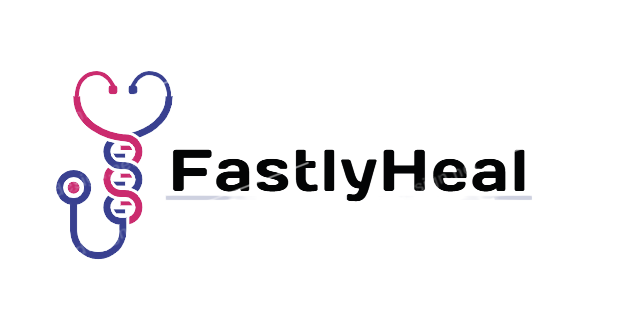Small blisters or large blisters, which become superinfected, complicate or leave scars, or those that do not bother and that simply heal with diet or some cream. All these variations and more will depend on the cause that generates them and the treatment will always be aimed at solving the specific cause, so it is important to reach the correct diagnosis.
If you want to know what are the causes of blisters on the hands and what treatments should be followed to cure them in each case, keep reading this article by FastlyHeal .
Table of Contents
Chilblains: blisters on the hands that itch
A single exposure to a very cold environment without gloves or repeated exposure to low temperatures is enough for injuries to occur for this reason. Chilblains are the result of inflammation of small blood vessels and usually occur in exposed areas of the skin such as the hands, ears and, sometimes, on the feet when appropriate footwear is not used for the cold. Not only blisters can appear, but also redness, red spots and inflammation, often accompanied by pain or itching.
Treatment
Chilblains usually heal on their own if low temperatures are avoided or the damaged area is covered. There are some creams that can be used and even chamomile tea or the application of aloe vera in the area can help. In the following article, you can see effective home remedies for chilblains .
Skin blisters with fluid from dyshidrosis
It is about the appearance of small blisters like clusters on the hands (especially on the palms and sides of the fingers) and, sometimes, on the feet, which are very itchy. They usually appear regularly, sometimes in the same season of the year, and may even be associated with people with rhinitis, but the cause has not been established. The blisters usually heal in about two to three weeks, then resulting in a slightly dry or scaly appearance of the skin.
Treatment
Treatment may consist of moisturizing creams, with corticosteroids or immunomodulators. Sometimes, corticosteroid therapy by mouth may be required when the case is so severe that it warrants it.
In addition, you can apply cold compresses and even better if you also use chamomile. To avoid its appearance, it is convenient to use soaps and mild substances, wear gloves and maintain a healthy diet rich in fruits and vegetables, avoiding intoxicating substances such as dairy, gluten, sugar, canned, processed, etc.
Physical or chemical irritation
The friction repeated in the hands or part of them, and contact with irritants without gloves permanent way (contact dermatitis) can cause small blisters appear, painful until they heal. The same can happen with burns , they are known as second degree when blisters appear.
Treatment
The way to heal blisters on your hands is to avoid what irritates them: wearing gloves and watching the way you use your hands. Sometimes, minimally correcting the way you do a task can make you better.
It is advisable not to break the blisters yourself, as they protect the skin that must heal underneath. When the burns are very extensive, professionals can break the blisters formed, but always while undergoing a recovery treatment.
Hand-foot-mouth disease
It is a viral disease that occurs mainly in children and is contagious. The typical picture consists of the appearance of blisters on the palms of the hands, soles of the feet and the mucosa of the mouth, the throat hurts and there is a fever for the first few days.
Treatment
As usually happens in viral pictures, the picture subsides only in about 7 to 10 days. You can obtain more information by consulting the article Contagion and treatment of hand-foot-mouth disease .
Strep infection
The impetigo is a skin infection caused by streptococcus, on the same lesions itchy blisters or pimples type with red border, then collected pus and then crust over occur. They can appear in areas that have previously been injured.
Treatment
Treatment is with antibiotics and avoiding scratching, since it spreads in this way to other areas of the skin.
Yeast infections
Some mycoses can first appear as blisters that break easily , it is common to find this type of foot injury ( athlete’s foot ), but it also causes problems in the hands.
Treatment
The treatments are basically avoiding humidity and applying antifungal creams.
Celiac disease
The intolerance to gluten or celiac disease usually manifests digestive symptoms such as diarrhea and swelling of the abdomen, but other adults sometimes very different symptoms may appear, including: blisters on my hands. It is one of the many autoimmune diseases that can affect the skin.
Treatment
In this case, a healthy diet, rich in fruits and vegetables, in which foods and substances with gluten are avoided will help to improve this and other symptoms.
Other autoimmune diseases that can affect the skin
The pustular psoriasis, pemphigus, lupus , and other diseases, can lead to blisters on hands, feet and other parts of the body. These are autoimmune diseases, that is, your body reacts against itself. Determining what type of disease is causing the lesions is important as it can help you know what to expect and how to treat it.
Treatment
Among the treatments, corticosteroid creams, immunomodulators or medication of this type by mouth may be indicated, depending on the severity of the symptoms.
Kidney disease
In the case of some moderate or advanced kidney diseases, especially in patients receiving dialysis, skin lesions such as thickening and darkening may appear , rarely there may also be blisters.
Treatment
The treatment will be that of the kidney disease that is suffered. In addition, improving healthy habits is essential to achieve recovery.
Blistered epidermolysis
It is also known as butterfly skin because due to minimal injuries, the skin is injured, leading to blisters and thickening of the skin , among other injuries. It is a hereditary and non-contagious disease, which can range from mild to very serious.
There are other very rare diseases in which, due to genetic defects, frequent blisters appear in different areas of the body, this is the case of Darier’s disease.
Treatment
The most important thing is to prevent injuries, and treatment will depend on their severity, and may include rehabilitation or surgeries to avoid poor healing.
Diabetic bullous disease
It is a rare manifestation of this disease, it has been seen more in patients with a need to receive insulin . It is the appearance of blisters on the hands, feet and, sometimes, arms and legs, which usually heal on their own in 3 weeks and without leaving a scar. It is believed to be due to the involvement of the nerves in these areas.
Treatment
Treatment consists of keeping the sugar within normal levels.
This article is merely informative, at FastlyHeal .com we do not have the power to prescribe medical treatments or make any type of diagnosis. We invite you to see a doctor in the case of presenting any type of condition or discomfort.
If you want to read more articles similar to Blisters on the hands: why they come out and how to cure them , we recommend that you enter our Skin, hair and nails category .

I am a Surgeon with a diploma in comprehensive ultrasound and surgical care residency, an area I am specializing in. During the exercise of my profession, I have realized the need for patients to know the diseases they suffer, and I can tell you that a large part of their complications is due to a lack of information. Being a health web writer allows me to transmit my experience, without borders, to all those readers eager for knowledge, educate them in the prevention of diseases and promote a healthy lifestyle.
